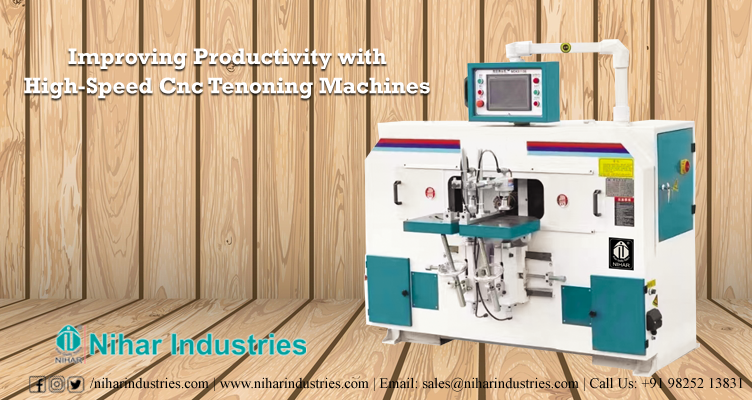With growing demand and needs, many woodworking companies are seeking advanced mechanisms to improve their potential. Many find it complicated to deal with the productivity requirements of the industry. The woodworking sector has become radically fast-paced in recent years, and you need the right tools and machinery to stay competent.
Traditional tenoning, finishing, and joinery methods can deliver good results, but they often lag when delivering higher productivity. If you think these tools are falling back in terms of scalability, speed, and consistency, you need to upgrade your armoury of tools and machines to achieve the desired results. One of the best tools you can buy for your woodworking store is a high-speed CNC tenoning machine. These machines have completely changed the way tenons are produced. By using these machineries, you can enhance productivity significantly without giving up on value.
A CNC or Computer Numerical Control tenoning machine is an exclusive piece of equipment used to cut tenons. Tenons are jutting wooden tongues used in mortise and tenon joints. These machines efficiently industrialize the process of tenon cutting with great speed and precision, thus making them indispensable in large-scale production facilities and modern joinery shops. Unlike manual or traditional tenoners, CNC models are directed by computer programs. This allows for complex and consistent cuts with minimal manual intervention.
Let’s now look at some of the best features of high-speed CNC tenoning machines.
Precision engineering: High-speed CNC tenoning machines are designed and engineered for optimum accuracy. They use servo motors and ball screw drives to deliver precise positioning and consistent dimensions. This is critical for joints that must fit tightly for strength and aesthetics.
Rapid cycle times: These machines are equipped with powerful motors and high-speed spindles, which makes it possible for them to produce tenons in seconds rather than minutes. This is awesome for manufacturers looking to produce high volumes of furniture parts or architectural millwork.
Multi-axis control: Many modern CNC tenoning machines feature multi-axis operation, which makes it possible for them to handle complex tenon profiles and angled cuts. It opens up innovative design possibilities while minimalizing the need for secondary machining.
User-friendly programming: Operators can easily program numerous tenon sizes, shapes, and positions by using its highly intuitive interface. Some systems even allow integrating the machine with CAD/CAM software, further restructuring the design-to-production workflow.
Tool-changing capabilities: Automatic tool changers permit the machine to effortlessly switch between tools without the input of an operator, thus curtailing downtime and advancing efficiency during multiple batch production runs.
Using high-speed CNC tenoning machines comes with a wide range of benefits. Firstly, these machines can expressively boost the output of your tenoning efforts and progress the quality of the finished goods. Secondly, they can help you produce items with consistent quality. You can also save time during production and increase the competence of the people working for you. Another great benefit of using these machines is that they can reduce material waste so that you can make the most of the raw materials you have.

